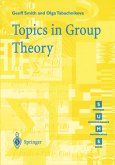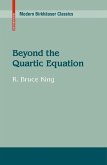Topological indices of nanotubes are numerical descriptors that are derived from graph of chemical compounds.Such indices based on the distances in graph are widely used for establishing relationships between the structure of nanotubes and their physico-chemical properties.Types of symmetry groups are commonly used in chemistry. Point groups are used for molecules, whereas, for solids, the 230 space groups are used Neither of these types of symmetry groups are suitable for representing unit cells in solids the symmetry of which is in termediate between that of point groups and space groups represent the symmetry of unit cells in an infinite lattice, a third type of symmetry group must be used. An algorithmic method of generating these symmetry groups is describe.It can be demonstrated that these groups are valid by use of conventional symmetry group theory, this technique has been applied to the two-dimensional graphite lattice. Because the new method generates symmetry tables using only the topology of the system, the symmetry properties of graphs can also readily be derived. Last,the relationship between these groups and the other two types of groups is identified.
Bitte wählen Sie Ihr Anliegen aus.
Rechnungen
Retourenschein anfordern
Bestellstatus
Storno








